[Cinquefoils: The Genera Comarum, Dasiphora, Drymocallis and Potentilla in the Cascade Mountains of Oregon and Washington]
Brook Cinquefoil, Stream-bank Cinquefoil
Potentilla rivalis
Synonyms: Potentilla leucocarpa, Potentilla millegrana, Potentilla millegrana var. millegrana, Potentilla pentandra, Potentilla rivalis var. millegrana, Potentilla rivalis var. pentandra, Potentilla rivalis var. rivalis, Tridophyllum rivale
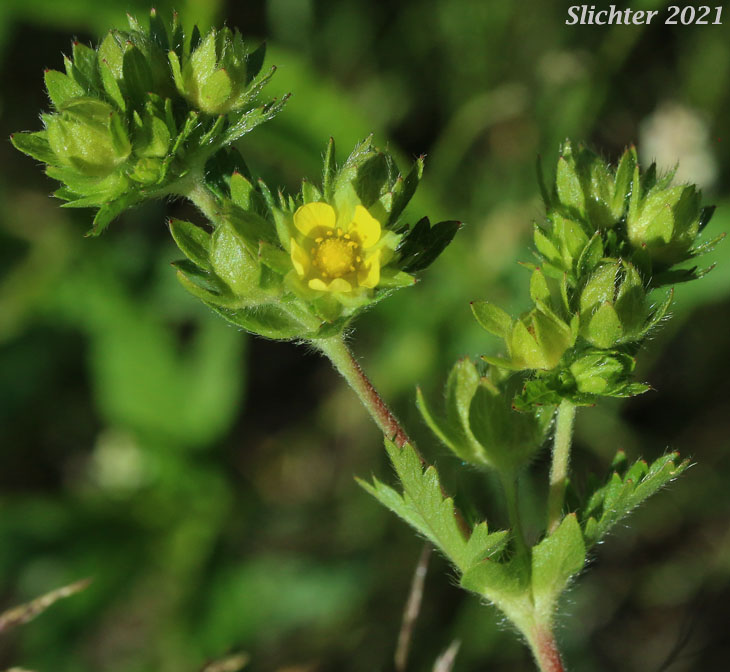 -
- 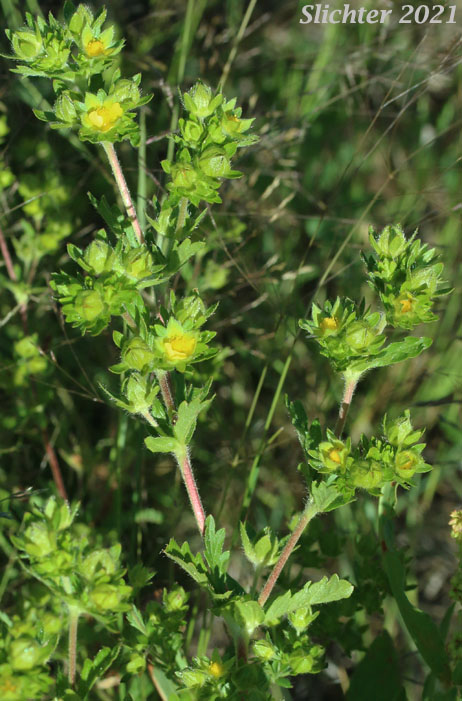 -
- 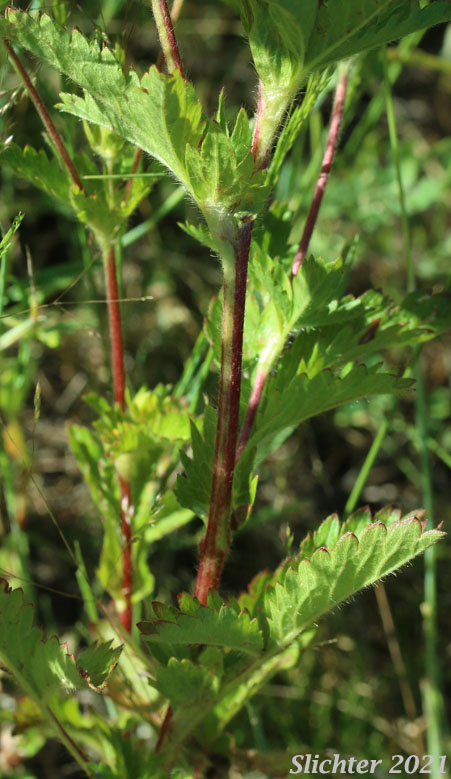
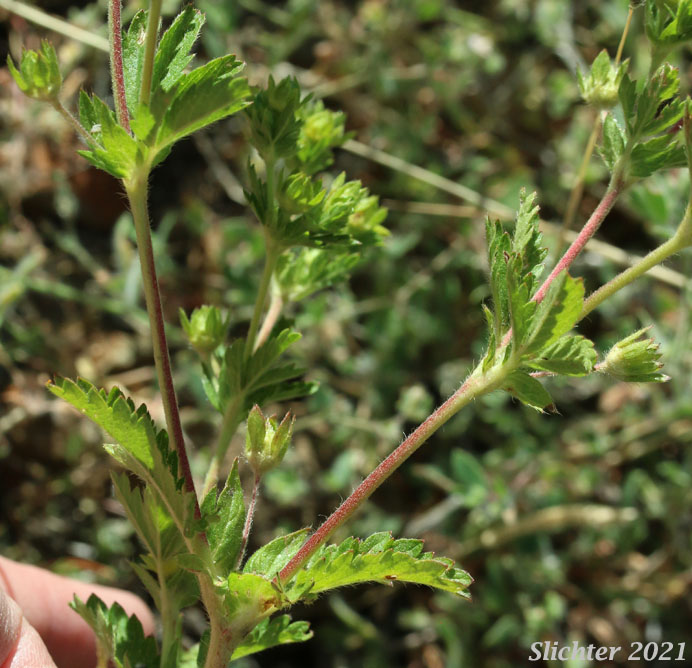 -
- 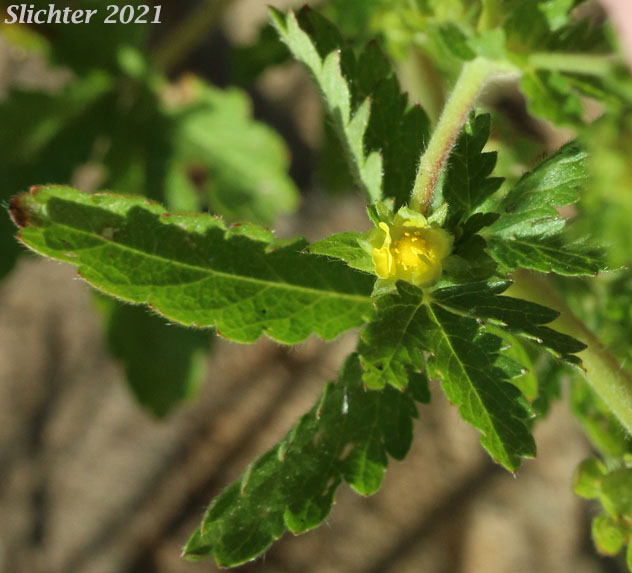
Streambank cinquefoil as observed in the riparian area of the drained Howard Prairie Lake at Grizzly Creek Campground, Jackson County Parks, OR.....July 23, 2021.
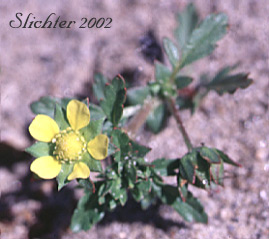 Photo
at right is of the flower of of brook cinquefoil along
the Columbia River at The Dalles, OR.......August 26, 2001.
Photo
at right is of the flower of of brook cinquefoil along
the Columbia River at The Dalles, OR.......August 26, 2001.
Characteristics:
Sometimes known as stream-bank cinquefoil, brook cinquefoil
is an annual to biennial wildflower with a spreading to erect growth form. The
stems are often stout and simple to branched from the base, and 20-60 cm long.
The herbage is often tomentose and glandular. The basal and lower stem leaves
are long-petioled. The lower leaves often have 5 leaflets or only 3 leaflets
with the terminal one in turn deeply 3-cleft or parted. The blades are 3-5 cm
long, oblanceolate to obovate in shape with coarse, irregular teeth on the margins.
The inflorescence is often leafy and flower bearing much of
the length of the stem. The five calyx lobes are 4-5 mm long and the 5 petals
are a light yellow, ranging from one-half to almost the same length as the calyx
(See photo above.) Individual petals are obovate or oblanceolate with rounded
to blunt tips. The stamens number either 10 or 15.
Habitat:
Brook cinquefoil may be found along the margins of lakes, ponds,
rivers and streams and in swamps.
Range:
Brook cinquefoil may be found from British Columbia south along
the east side of the cascade Mts. in British Columbia, Washington, and Oregon.
It extends west down the Columbia River Gorge then south throught the Willamette
Valley to southwestern Oregon and south along the coast in California. Its range
estends eastward to Saskatchewan, minnesota, Illinois, Missouri, New Mexico
and northern Mexico.
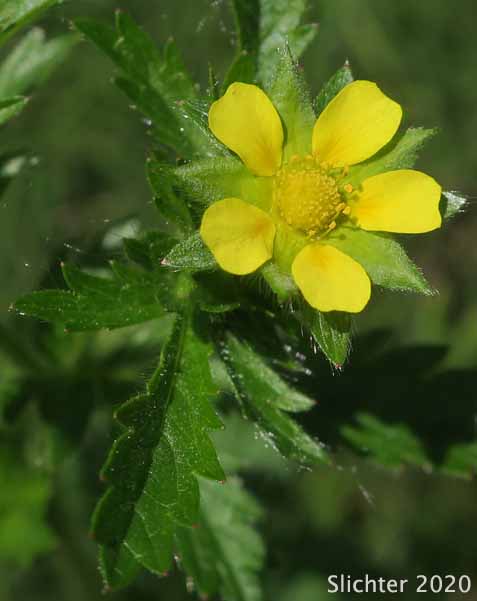 -
- 
 -
- 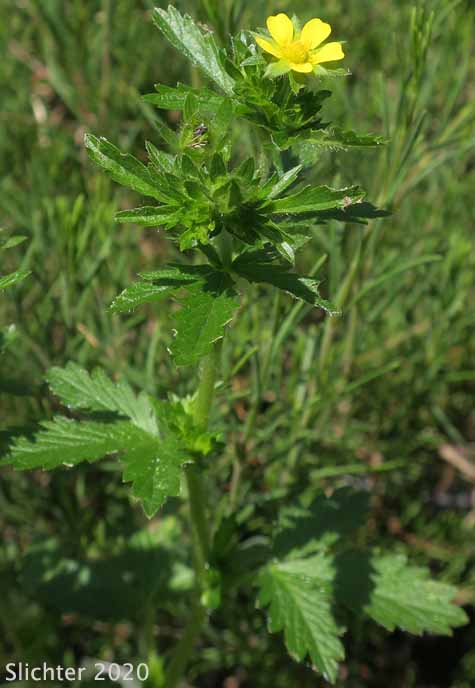
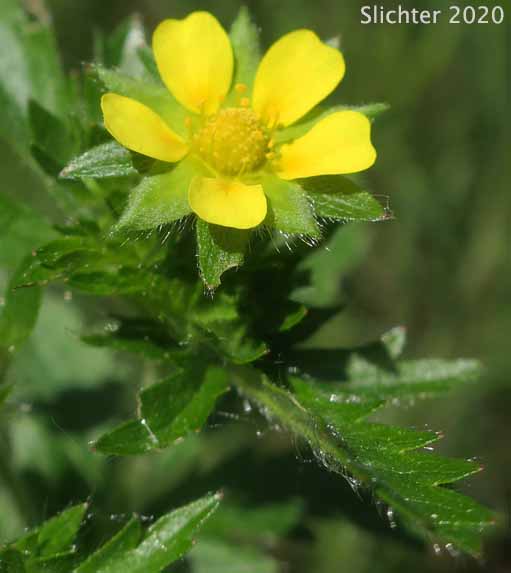 -
- 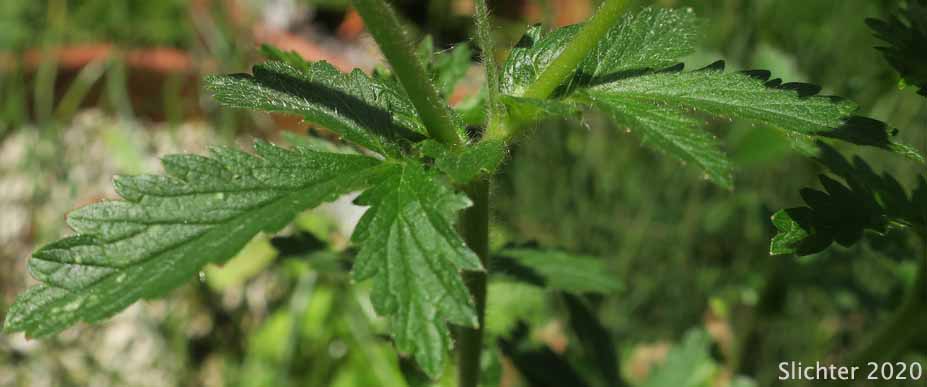
Streambank cinquefoils from the webmaster's garden.......May 2020. This native species is typically found in moist, riparian areas at the east end of the Columbia River Gorge and from the east slope of the Cascades eastwards in the Pacific Northwest.
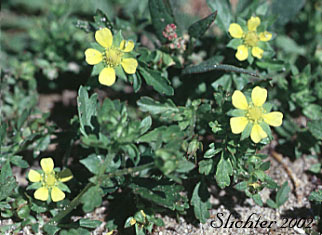
The photo above shows brook cinquefoil as seen in sandy soils along the Columbia River
at The Dalles, OR.......August 26, 2001.
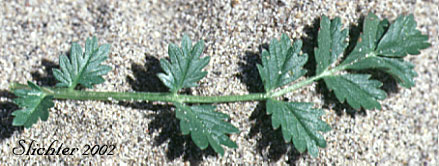
The photo above shows the leaf of brook cinquefoil along the
Columbia River at The Dalles, OR.......August 26, 2001.
Paul Slichter
 Photo
at right is of the flower of of brook cinquefoil along
the Columbia River at The Dalles, OR.......August 26, 2001.
Photo
at right is of the flower of of brook cinquefoil along
the Columbia River at The Dalles, OR.......August 26, 2001.











